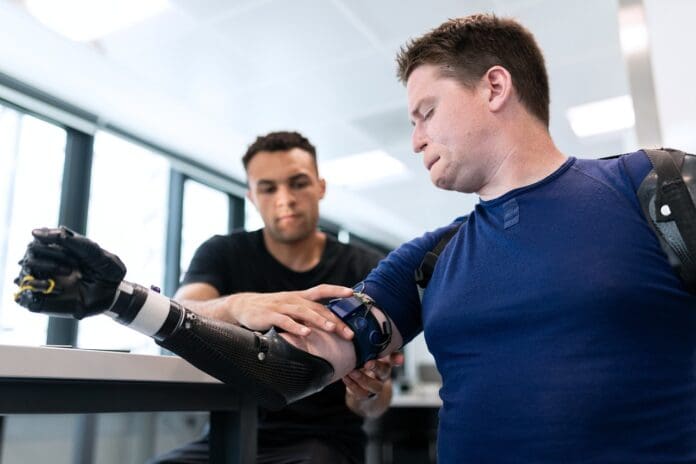This post is also available in:
 עברית (Hebrew)
עברית (Hebrew)
Researchers at the BioRobotics Institute of the Scuola Superiore Sant’Anna in Pisa have developed the world’s first magnet-controlled prosthetic hand, offering a significant advancement in prosthetics technology. This innovative prosthesis allows amputees to control the hand using magnets and an advanced algorithm to convert muscle contractions into specific commands. This system enables precise control over grip strength, making it particularly effective for handling delicate objects.
Unlike traditional prosthetics that rely on wires or electrical connections, this new prosthetic hand operates solely through magnets and muscle movements. The technology facilitates everyday tasks such as opening jars and picking up small items. Christian Cipriani, a professor at the BioRobotics Institute, highlighted the breakthrough, stating, “We have finally developed a functional prosthesis that meets the needs of a person who has lost a hand.”
The prosthetic hand leverages myokinetic control, a technique where small magnets are implanted in residual muscles of the amputated arm to interpret motor intentions. As the muscles contract, the magnets shift, which is detected by an algorithm that then directs the prosthetic hand’s movements. Cipriani explained that there are 20 muscles in the forearm, many of which control hand movements. Many people who have lost a hand still feel as though it is there, and the residual muscles continue to respond to brain signals to move the phantom hand. The research team mapped these muscle movements in order to convert them into precise commands through a unique algorithm that translates magnet movement into hand motions.
The first patient to use this technology was a 34-year-old Italian named Daniel. Surgeons successfully implanted six magnets in Daniel’s residual arm, using preoperative imaging to locate viable muscles. Daniel’s experience has been highly positive. He demonstrated the ability to move his fingers, pick up and move various objects, and perform daily activities such as opening jars, using tools, and cutting with knives. The prosthesis also enabled him to regulate force, allowing him to handle delicate items with care. Daniel testifies that the system allowed him to feel like he was moving his own hand.


























